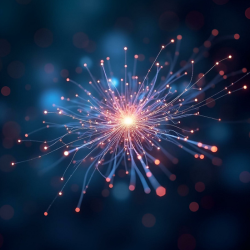

Variational quantum algorithms (VQAs) play a significant role in improving the efficiency and accuracy of quantum computers. However, they come with high noise levels, which degrade their performance. Even though current techniques can mitigate their noise, they involve excessive computational overhead, which limits their feasibility.
However, in a paper written for IEEE Transactions on Quantum Engineering, Yigal Ilin and Itai Arad propose incorporating dissipative operations to alleviate the effects of the noise that plagues traditional VQAs. They call them dissipative variational quantum algorithms (D-VQAs).
D-VQAs enable the preparation of mixed quantum states without forcing the use of additional ancilla qubits. As a result, D-VQAs conserve significant amounts of computing power, primarily because they leave quantum computers with more qubits to power their processes. This is key because quantum computers often only have a very limited number of qubits available initially.
If a researcher or engineer prepares Gibbs states, they can study how quantum computing systems behave at specific temperatures. Gibbs states describe quantum systems in terms of their thermal equilibrium. This involves two classifications:
Preparing the Gibbs state helps a researcher determine the probability of finding particles in each energy state, given a certain temperature.
This is important because, once someone can prepare Gibbs states on a quantum computer, it is far easier to simulate real-world physical conditions and how they may impact quantum computing.
Traditional VQAs are limited because:
Using qubits to combat noise is akin to taking two cores away from a traditional quad-core computer and forcing it to run like a dual-core machine.
According to Ilin and Arad’s research, dissipative dynamics can help address these limitations.
Dissipative dynamics simulate the energy loss that would occur in a quantum system given a specific temperature. Ilin and Arad use an “R-gate,” which resets a qubit to a variational pure state that has a specific probability. Thus, their solution mimics the effects of a quantum system interacting with a specific environment.
In other words, their approach eliminates the need for ancilla qubits. This frees up tremendous amounts of quantum computing power that would otherwise get used up while combating noise.
Dissipative variational quantum algorithms can mitigate barren plateaus. A barren plateau is a region in the optimization landscape where the gradient of the cost function becomes very small. As a result, barren plateaus make it very hard for optimizers to update parameters. This can completely stall the training process.
Another way of looking at it is from the perspective of the optimizing functions. They need to see “hills and valleys” in the optimization landscape to determine the most efficient path toward the optimal solution. But barren plateaus make the landscape flat, leaving the functions with little to work with.
On the other hand, D-VQAs roughen the landscape by increasing the variance of gradients. This makes the job of optimizers easier because they can see the hills and valleys and use this to find the best solution.
Ilin and Arad’s research may dramatically change the way researchers and engineers reduce quantum noise because it:
In short, engineers and researchers may be able to do more while using fewer resources, particularly when it comes to the Gibbs state preparation process. To learn more about how to harness D-VQAs, download the paper below.